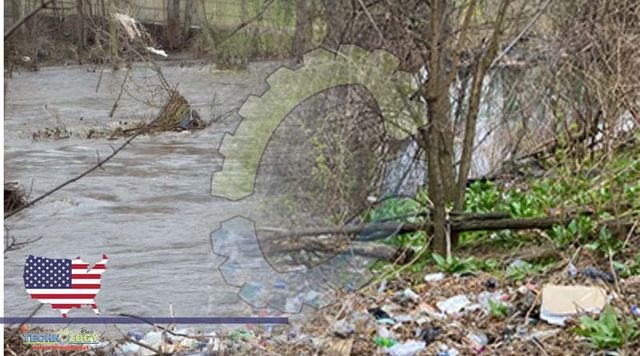Microplastics are threatening water and land across Missouri When Missouri River Relief tackled a 10.2-mile stretch of the river in early April, volunteers hauled out 247 blue bags full of trash, estimated together to weigh 5.1 tons.

That’s about the weight of a middle-aged elephant, a U-Haul cargo van or a Caterpillar D2 bulldozer. The amount of trash flowing into the river from populated areas in the state is “a big problem,” said Melanie Cheney, office manager of Missouri River Relief. Much of that trash is broken down in the water, leaving tiny pieces behind that are impossible to collect. “Those bags break down into a million little pieces,” Cheney said.It’s called microplastic pollution, and it’s become a global issue. Milk cartons become brittle after sitting in the hot sun and easily snap into pieces if not handled carefully. Bits of Styrofoam blocks decompose to become water and shore debris. Disposable single-use plastics leave toxic particles behind as they shred throughout the environment.
Missouri River Relief volunteers struggle to get these plastic shards out of the sand by pulling out pieces by hand, but it’s just not possible to get them all. “There’s little pieces of Styrofoam blowing all over as we’re trying to get it out of there,” Cheney said. Every new rain and flood event “brings new trash into the river.” Microplastic pollution has even been detected in human blood for the first time. In a paper published last month in Environment International, researchers found plastic in the blood of 17 of 22 study participants, or about 77%.
Half of the samples contained PET plastic, the substance found in drink bottles, and one-third contained polystyrene, used in packaging and other food products. There is even evidence of humans simply breathing it in, although the health impacts remain unknown. There is also a possibility that Microplastics are threatening water that can be transported around the body and lodge in people’s organs. Polluting microplastics can be divided into two different categories primary and secondary. Primary microplastics derive from plastic designed for commercial use, such as pellets used in manufacturing, synthetic fibers in textiles or microbeads found in body and face scrubs. Secondary microplastics are fragments of plastic broken down from larger objects such as bottles or bags.
The Missouri Department of Natural Resources does not regulate microplastics because they are not governed by the EPA’s National Primary Drinking Water Regulations. At this time, it’s still an “academic research-type issue,” said Eric Medlock, environmental program manager for the Department of Natural Resources. The Environmental Protection Agency is awaiting further research about the influences of microplastics having potential harms to the body, he said. “With something like microplastics, the science is so new and evolving,” said John Hoke, water control branch chief. “They (EPA) haven’t done much research or established water quality standards. We’re waiting and looking at what EPA is doing, looking at the science and what’s out there for potential future criteria.”
Source: This news is originally published by columbiamissourian